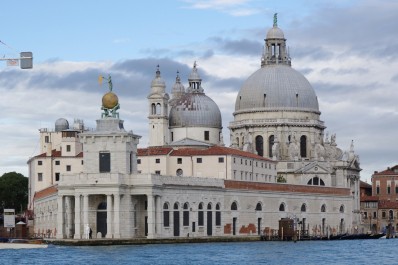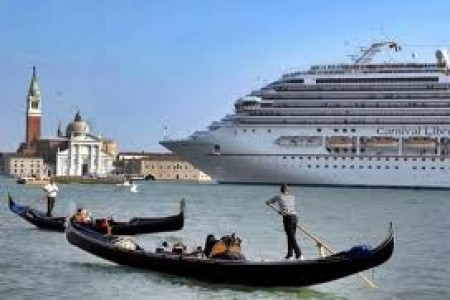041/959202
info@garageeuropamestre.com
Chiesa della Salute
The Basilica was constructed to commemorate the terrible plague of 1630 -1631 and the consequent votive pronounced by the Doge to obtain the blessing of the Virgin.
The Basilica was constructed to commemorate the terrible plague of 1630 -1631 and the consequent votive pronounced by the Doge to obtain the blessing of the Virgin. The basilica was consecrated in 1687.
The young architect, Baldassarre Longhena, was commissioned with the formidable job of planning the church. His project met the grandiose requirements of the Serenissima republic: a church that would glorify the Virgin Mary and at the same time, the Republic. The church has a central layout and is covered by a monumental dome characterised by magnificent volutes that act as buttresses. From the outside, the octagonal layout is distinguished by a like number of architectonic façades with the most magnificent is the one on the main façade, characterised by a splendid entrance way and enhanced by a monumental staircase.
To this day, 21 November brings thousands of Venetians on a pilgrimage to the high altar to carry on this long-standing tradition of giving thanks to the Virgin Mary on the feast day dedicated to her honour and perhaps the day most dear to Venetians.
The Basilica was constructed to commemorate the terrible plague of 1630 -1631 and the consequent votive pronounced by the Doge to obtain the blessing of the Virgin. The basilica was consecrated in 1687.
The young architect, Baldassarre Longhena, was commissioned with the formidable job of planning the church. His project met the grandiose requirements of the Serenissima republic: a church that would glorify the Virgin Mary and at the same time, the Republic. The church has a central layout and is covered by a monumental dome characterised by magnificent volutes that act as buttresses. From the outside, the octagonal layout is distinguished by a like number of architectonic façades with the most magnificent is the one on the main façade, characterised by a splendid entrance way and enhanced by a monumental staircase.
To this day, 21 November brings thousands of Venetians on a pilgrimage to the high altar to carry on this long-standing tradition of giving thanks to the Virgin Mary on the feast day dedicated to her honour and perhaps the day most dear to Venetians.



